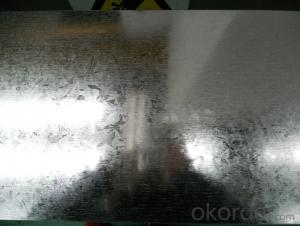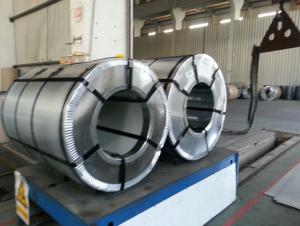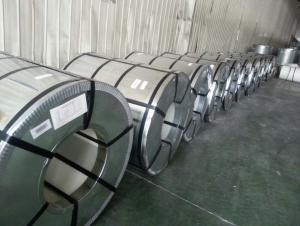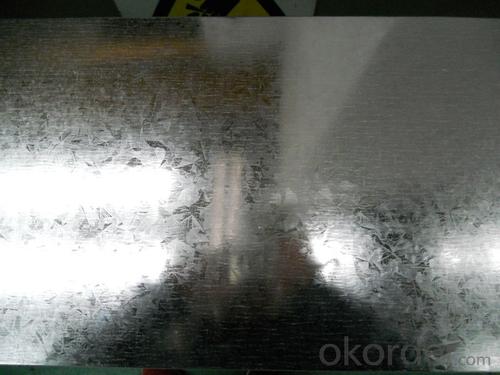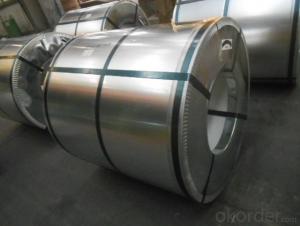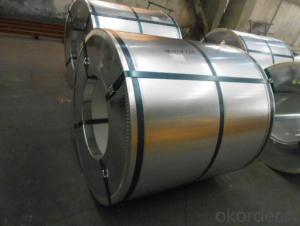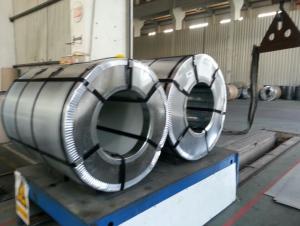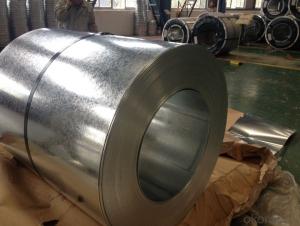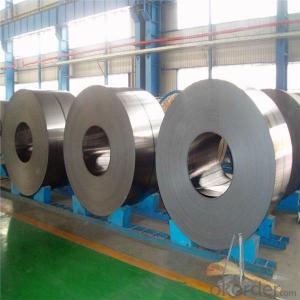Hot Dipped Galvanized Steel Coil in Coil
- Loading Port:
- Tianjin
- Payment Terms:
- TT OR LC
- Min Order Qty:
- 25 m.t.
- Supply Capability:
- 10000 m.t./month
OKorder Service Pledge
OKorder Financial Service
You Might Also Like
Hot Dipped Galvanized Steel Coil in Coil
Description:
Galvanized Steel Coil gets coated in layers of zinc because rust won't attack this protective metal. The most external layer is all zinc, but successive layers are a mixture of zinc and iron, with an interior of pure steel. These multiple layers are responsible for the amazing property of the metal to withstand corrosion-inducing circumstances. Zinc also protects the steel by acting as a "sacrificial layer." If rust does take hold on the surface of Galvanized Steel Coil, the zinc will get corroded first. This allows the zinc that is spread over the breach or scratch to prevent rust from reaching the steel. For countless outdoor, marine, or industrial applications, Galvanized Steel Coil is an essential fabrication component.
Superiority:
1. Good Resistance to Corrosion
2. Qualified Processing Machinability
3. High Thermal Resistance
4. Excellent Reflectivity
5. Inexpensive and effective enough
6. Can be recycled and reused multiple times
Application:
With excellent cold bending molded manufacturability, good decoration effect, strong anti-corrosion ability, galvanized steel coils and sheets are also pollution-free and easily recycled. Accordingly, they can be used as final products and basic plates of color coated steel coils and widely applied in construction, home appliances, decoration
Construction field ,ships building industry ,Petroleum and chemical industries ,war and electricity industries ,food processing and medical industry, boiler heat exchanger, machinery and hardware fields
Product Specification:
Material:SGCC,DX51D,Q195
Thickness: 0.3-3.0mm
Width: 600-1500mm
Inner Diameter: 508mm, 610mm
Weight of Steel Coil: 3-15MT
Coating Type: Al-Zn Alloy
Available Dipped Layer: 50-150g/m2
Surface Finish Structure: Normal Spangle & Small Spangle & Zero Spangle
Steel grade & Standard: JIS G3302 SGCC
FAQ:
1.How about the package for the Hot Dip Galvanized Steel in Coil?
Usually Standard export seaworthy package: waterproof paper+steel trip packed+wooden case seaworthy package
2. Can I know the production period of the goods?
Usually it need 20 days for 25tons in one container. We can produce 300 tons per day but we need to arrange the production in advance.
3. How about the label, could you make the label according to pour requirements?
Usually we use the MILL label, but if you need special form we can make.
- Q: How do steel coils contribute to the strength and durability of structures?
- Steel coils, being made of high-strength steel, contribute to the strength and durability of structures in multiple ways. Firstly, the tightly wound coils provide structural stability and support, enabling the construction of large-scale buildings and infrastructure. Additionally, the inherent strength of steel allows it to withstand heavy loads, impacts, and extreme weather conditions, ensuring long-lasting durability. Furthermore, steel coils offer excellent resistance against corrosion and fire, further enhancing the structural integrity and lifespan of the structures they are used in.
- Q: What is the maximum tension that steel coils can withstand during uncoiling?
- The maximum tension that steel coils can withstand during uncoiling can vary depending on various factors such as the type and grade of steel, the dimensions of the coil, and the uncoiling process. However, steel coils are typically designed to withstand high tension forces, with maximum tensile strengths ranging from 300 to 2,000 megapascals (MPa). It is recommended to consult the manufacturer's specifications or engineering guidelines for precise information regarding the maximum tension limits for a specific steel coil.
- Q: I found this amazing kid on youtube - is he using nylon or steel strings?(I'm buying my first guitar! helpp)oh and is fingerstyle also possible in steel string guitar? does it hurt?(I might sound really stupid-..)thanks a lot
- Lol that's sung ha jung. You can play with both types but it is easier to start off learning in nylon.
- Q: How are steel coils used in the production of storage racks?
- Steel coils are used in the production of storage racks by being uncoiled, cut, and shaped into the required dimensions and components of the racks. These steel coils provide the necessary strength and durability to support heavy loads and ensure the stability and longevity of the storage racks.
- Q: How are steel coils processed at the steel service centers?
- Steel service centers process steel coils through a series of steps to transform them into finished products that meet the specific requirements of customers. The process typically begins when the steel coils arrive at the service center. These coils are usually large and heavy, and they may have been produced by a steel mill or imported from overseas. Upon arrival, the steel coils undergo a quality inspection to identify any defects and ensure that only high-quality coils are used in the production process. After inspection, the coils are stored in a warehouse until they are ready for processing. Next, the steel coils are uncoiled to create flat sheets of steel. This can be done manually or using automated machines, depending on the size and thickness of the coils. The uncoiled steel is then leveled to remove any residual stress and ensure a flat and consistent surface. Once leveled, the steel sheets go through various processes based on the desired end product. These processes may include cutting, shearing, slitting, and forming. Cutting and shearing involve shaping the steel sheets into specific sizes or shapes. Slitting involves cutting the steel into narrow strips, while forming involves bending or shaping the steel. After the desired processing operations are completed, the steel sheets are often treated with surface finishes to enhance their appearance or protect them from corrosion. These finishes may include painting, coating, or galvanizing. Finally, the processed steel sheets undergo another quality inspection to ensure they meet the required specifications. They are then packaged and prepared for shipment to customers in industries such as construction, automotive, or manufacturing. Overall, the processing of steel coils at steel service centers involves a combination of inspection, uncoiling, leveling, cutting/shearing/slitting/forming, surface finishing, quality control, and packaging. This process allows for the transformation of steel coils into finished products that are customized to meet the specific needs and requirements of customers.
- Q: Can anyone please tell me what is the DUCTILE TO BRITTLE TRANSITION TEMPERATURE IN STEEL LOW CARBON?Thanks.
- The temperature varies with the type of low carbon steel and how it is heat treated. Common structural steel actually have a transition temperature as defined by Charpy impact tests to be in the 50 degree range. Most low carbon steel pipe such as ASTM A53, A106 and pressure vessel plate such as A212, a515 also have 50 degree range Charpy test results. If you look at materials with fine grain such A516 plate, A300 pipe and similar materials then the transition temperature drops to around -50 degrees. The thing to remember is in addition to the transition temperature you also have to have the material at a high stress level, a stress riser such as a notch and then the sudden application of additional stress to get an actual brittle fracture failure. That is why bridges make from common structural steel don't fail at temperatures as low as -40 degrees.
- Q: I was wondering what material most common motorcycle gas tanks are made out of? is it steel? stainless steel? aluminum? what are the advantages and disadvantages or each?
- Steel is the norm. Aluminum is lighter, but can be prone to cracking from vibration. It is seen more often in custom tanks, especially for custom cafe racers, Guzzis, Ducatis, Tritons, and the like. Dirt bikes use plastic tanks. Most after-market tanks for dual sports and adventure tourers are also made from plastic.
- Q: Does anyone know if there is any info on Steel Manufacturing techniques, utilyzing electro/mechanical methods in order to create carbon nanotubes from the %C already inherant in the steel. In other words just modifying the Geometry of the Carbon the already makes up some of the steel.
- I don't think that would work. First off, there's not enough carbon in steel - even very high carbon steels are only about 2% carbon. Second, the iron atoms in steel form a crystal lattice, in the shape of a cube, with another iron atom in the middle of the cube. Each cube is about 0.3 nm per side. Carbon atoms work their way into the crystals and displace the iron atoms. But a carbon nanotube is around 1 nanometer in diameter - that's 3 times as big as the iron lattice! So a nanotube wouldn't fit. One thing you might do, however, is make a composite - mix the materials together on a scale a little bigger than the atomic scale that the iron and carbon mix to make steel. Just like a carbon fiber bicycle frame or ski pole is strands of carbon (much bigger and not as strong as nanotubes) held together with epoxy, you could hold nanotube strands together with metal. Not sure it would be good for armor, but if you can figure out a way to do it, I'm sure someone will come up with a use for it!
- Q: I have samurai sword that is a replica of the kill bill sword. It says on the blade stainless steel, what can i use to shine and protect blade. It had and still does a wax.like coating on the blade sine i received it. Thx for ur help
- i like how you asked this in the Card Games section.
- Q: Can steel coils be used in outdoor applications?
- Yes, steel coils can be used in outdoor applications. Steel is known for its durability and resistance to harsh environmental conditions, making it suitable for outdoor use. Additionally, steel coils are often coated or treated to further enhance their corrosion resistance, making them well-suited for various outdoor applications such as construction, automotive, and manufacturing industries.
Send your message to us
Hot Dipped Galvanized Steel Coil in Coil
- Loading Port:
- Tianjin
- Payment Terms:
- TT OR LC
- Min Order Qty:
- 25 m.t.
- Supply Capability:
- 10000 m.t./month
OKorder Service Pledge
OKorder Financial Service
Similar products
Hot products
Hot Searches
Related keywords
